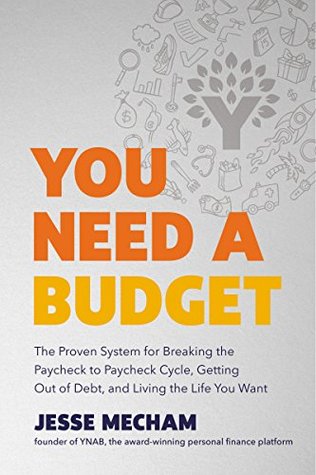More on this book
Community
Kindle Notes & Highlights
by
Jesse Mecham
but the bottom line is that we need a system in place to drive our decisions. Without one, we’re spending and saving on whims.
The question we need to ask ourselves isn’t Can I? or Should I? It’s What do I want my money to do for me?
What do I want my money to do for me? is about nothing less than deciding what kind of life you want to live, and then making a plan so your money can help you get there.
Rule One: Give Every Dollar a Job, is all about being proactive,
Rule Two: Embrace Your True Expenses,
Rule Four: Age Your Money, gets you working toward spending money you earned at least thirty days ago.
Rule One: Give Every Dollar a Job • Rule Two: Embrace Your True Expenses • Rule Three: Roll with the Punches • Rule Four: Age Your Money
Another big problem is that this is not actually budgeting, it’s forecasting.
Forecasting is when you look into the future and guess at your upcoming income and spending.
but the bigger question is, Does this move me closer to my goal? When that’s the filter guiding your money decisions, each dollar becomes a lot more powerful.
If you’re setting up your first budget, don’t even think about funding other spending areas—not yet.
The rest of your priorities take over after your obligations are funded.
Rule Two prompts you to break those bigger expenses into monthly installments so you’re prepared to pay them when they hit.
If you have debt, a chunk of your dollars is already spoken for. That means your debt is literally stealing from your ability to fund your current priorities.
This is exactly how we should treat our budget: like a flexible plan. The problem is, most people have a hard time seeing their budget as a living, adaptable thing.
You have to change your budget if you ever expect to stick with it.
You’re not accountable to every line item in your budget. That would be like holding yourself to that hour-by-hour schedule you wrote a week ago. It just won’t match reality. But you are accountable to your bottom line—that is, the balance between your money in versus money out. You can and should shift money between priorities when life demands (or requests!) it, but at the bottom line you know you have a finite amount of money.
Without Rule Four, you’ve got a stack of bills waiting for money. With Rule Four, you’ve got a stack of money waiting for bills.
My issue with debt is that it restricts your cash flow. It keeps money away from your priorities as you pay hundreds (sometimes thousands!) of dollars a month for something that’s already happened. That’s the exact opposite of what YNAB wants you to do.
Consumer debt is the biggest offender because most of it is for stuff you didn’t even care about. And your present-day priorities are hurting because of it.
Debt is not an option. Let this be your new mantra.
many of your Rule Two true expenses are top priorities, even if they don’t happen every month. Don’t ignore them. If you do, you’re likely to slide right back into debt the moment a “surprise” bill hits.
With Rule Two, you’re assigning money now for spending that will happen later. With debt, you’re spending money now that you won’t have until later.
The Opposite of Spoiled.
allowance should not be a wage kids receive in exchange for a task accomplished. Chores are separate. They’re something we do around the house because we love one another, and because we want our homes to be well functioning. We do chores as a duty and as an act of joy, love, and commitment to the people with whom we live.
This is the furthest thing from quitting. Restarting is victory. You’re killing it if you restart.


